
Shortly after the creation of the nation’s first municipal orphanage in 1790, the citizens of Charleston contributed to the construction of a large and well-documented edifice on Boundary (now Calhoun) Street that housed thousands of children between 1794 and 1951. The location of the institution’s initial home, visited by President George Washington in 1791, is far less remembered, however. A search for clues to the location of Charleston’s first Orphan House leads to a forgotten Pinckney family property in the heart of Colleton Square.
The city orphanage chartered in 1790 sprang from a century of local experience in the field of social services. During the colonial era in Charleston, as elsewhere in the British realm, the community rendered aid to indigent, disabled, and infirm people through churches and private organizations like the South Carolina Society. Following the 1706 establishment of the Church of England as the state-supported religion of South Carolina, the vestry and wardens of Anglican churches in each parish bore responsibility for addressing the needs of white adults and white orphan children within their respective bounds. In contrast, every private owner of enslaved people was responsible for the welfare of the men, women, and children they held in bondage. Because enslaved people formed the majority of South Carolina’s population from the early eighteenth century to 1865, the individual slaveholders of that era collectively shouldered most of the burden for what we might now call social welfare services in their respective communities.
In colonial South Carolina, as in contemporary England, every property owner paid an annual poor tax, contributing to a community welfare fund managed by the Anglican churchmen of their respective parishes. Those men, elected by their peers, allocated money and resources on a case-by-case basis to the relatively small number of destitute widows, disabled men, and orphaned children within their parish. The greatest need was always in Charleston because of the town’s relatively dense population and the constant flow of transient people through the busy seaport. The vestry and churchwardens of the urban parish of St. Philip were the sole agents of social services in the capital until the creation of the Parish of St. Michael in 1751. In the absence of municipal government during the second half of the eighteenth century, the two Anglican churches bore responsibility for assisting their white brothers and sisters in need.
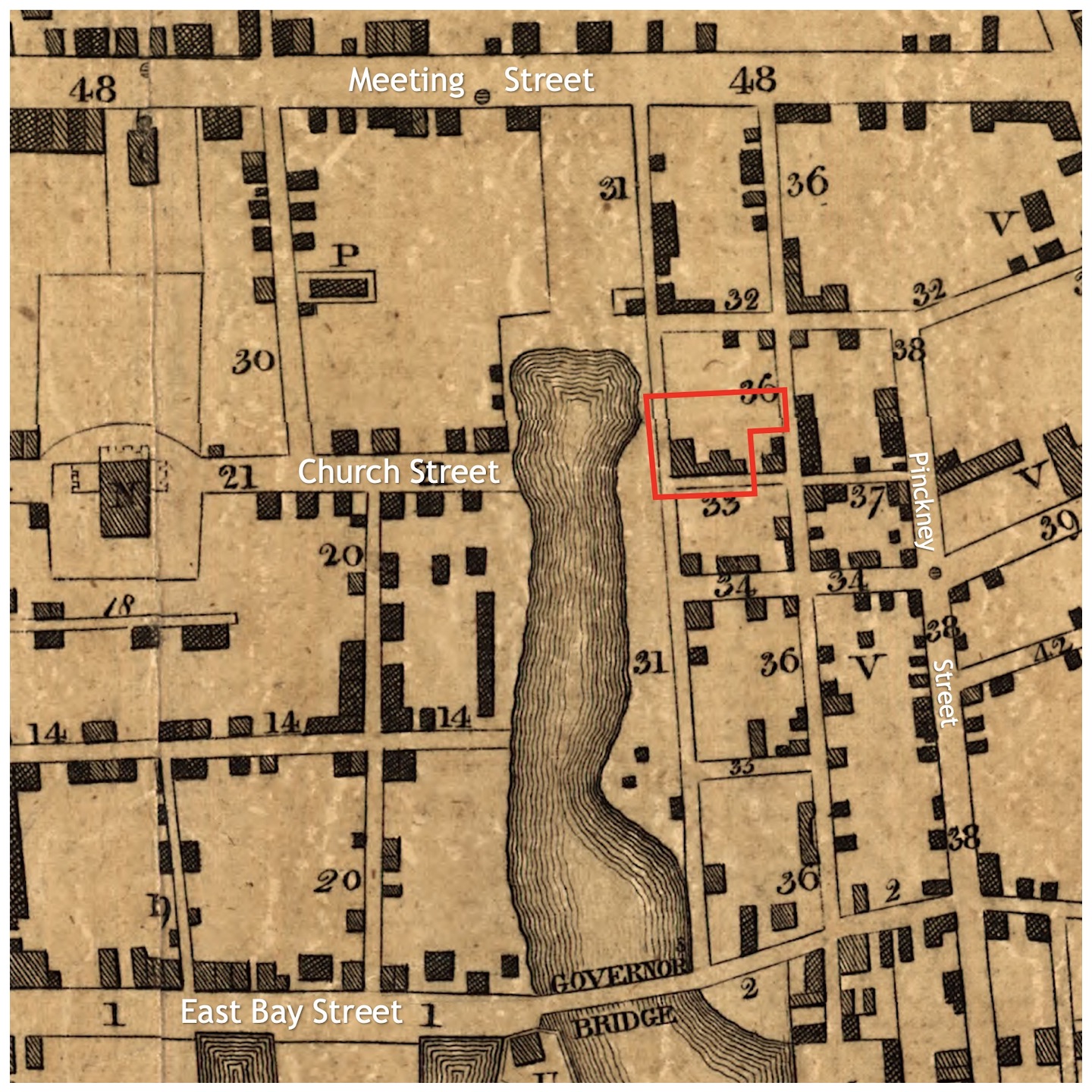
Between 1775 and 1783, the chaos and carnage of the War for American Independence disrupted the lives of many thousands of families across the eastern seaboard of North America. Some fled their communities to escape persecution, while military campaigns forced others to move. Many private businesses and farms failed during those turbulent years, and many families lost the fathers, brothers, and sons who had once provided the bulk of their support. In Charleston, as in other urban centers, the increased need for social services after the war prompted elected officials to consider new charitable strategies. The old parish system worked reasonably well within the context of a small community, but the increasing population of South Carolina’s capital city—incorporated in 1783—rendered their piece-meal charity work both practically and fiscally inefficient.
Conversations about the establishment of a municipal orphanage must have occurred long before the founding of the Charleston Orphan House in October 1790, but the actors responsible for its creation recorded no details of their motivations. The catalyst for its inception might have appeared four months earlier, when Susannah Snelling, an affluent young orphan spinster, made her will in late June. After manumitting three enslaved women who had attended her during a long battle with consumption, Susannah dictated instructions to the executor of her estate, a “friend” and relative named Thomas Jones (1742–1826), who happened to be the intendant (mayor) of Charleston at that moment. She gave a portion of her wealth directly to Jones for “his own use and benefit for ever,” then instructed him to sell an unspecified number of enslaved people “to such humane persons as he may chuse.” The money arising from such sales, said Miss Snelling, was to be given “to the South Carolina Society for an increase to the funds of that very charitable institution, to be appropriated by them as may seem best to them, for the relief of the unhappy and distressed.”[1]
Susannah Snelling died on 27 June 1790, some hours after signing her last will and testament. An obituary in the Charleston City Gazette lamented that she had died “in the 23d year of her age, after a long indisposition,” but rejoiced that she had “bequeathed a very handsome legacy to the South Carolina Society, to be applied to the charitable purpose of maintaining and educating poor orphan children.”[2] The newspaper undoubtedly received this information directly from Susannah’s executor, Intendant Thomas Jones, who likely discussed her donation with City Council sometime during the late summer of 1790. Similar private bequests had been made in the past, of course, but it’s possible that Miss Snelling’s dying wish inspired city leaders to consider the creation of a new public institution, one devoted to the support and education of children in need.
Efficiency must have been the buzzword among their conversations that autumn. When Charleston’s City Council ratified an ordinance to create the Orphan House on 18 October 1790, they included a preamble expressing their general motivations: “Whereas the present mode of supporting and educating poor children at different schools, has been found by experience to be attended with heavy expence and many inconveniencies, and the establishment of an orphan house, properly organized and conducted, will be attended with less expence, more convenience and benefit, and may tend to give general satisfaction to the citizens, and induce the benevolent to assist in the support of so charitable and laudable an institution.” The first paragraph of the body of the ordinance provides a useful outline of the new institution’s purpose and its place within the urban landscape. The city leaders ordained
“That a lot of land not less than two hundred feet square shall be immediately laid out by the committee of the City Lands on the most healthy and convenient spot, and reserved for the purpose of building and erecting an Orphan House, as soon as the funds of the corporation [i.e., the city] will admit, or any practicable plan to defray the expence thereof can be devised; And that all such poor orphan children, and children of poor distressed or disabled parents, as shall be deemed proper objects of admission by the commissioners, who shall be vested with powers for managing the said Orphan House, shall be admitted into the same, and shall be supported, educated and maintained at the expence of the corporation.”
The second paragraph defines the role of nine unpaid commissioners elected by City Council on the following Monday. Their first order of business, as prescribed in the third paragraph, was to secure a temporary residence for the institution while raising money to fund the construction of a permanent campus: “Until the said Orphan House shall be erected, a proper house and lot of land conveniently situated shall be rented as an Orphan House by the commissioners aforesaid, who shall have the direction and management of the same.”[3]
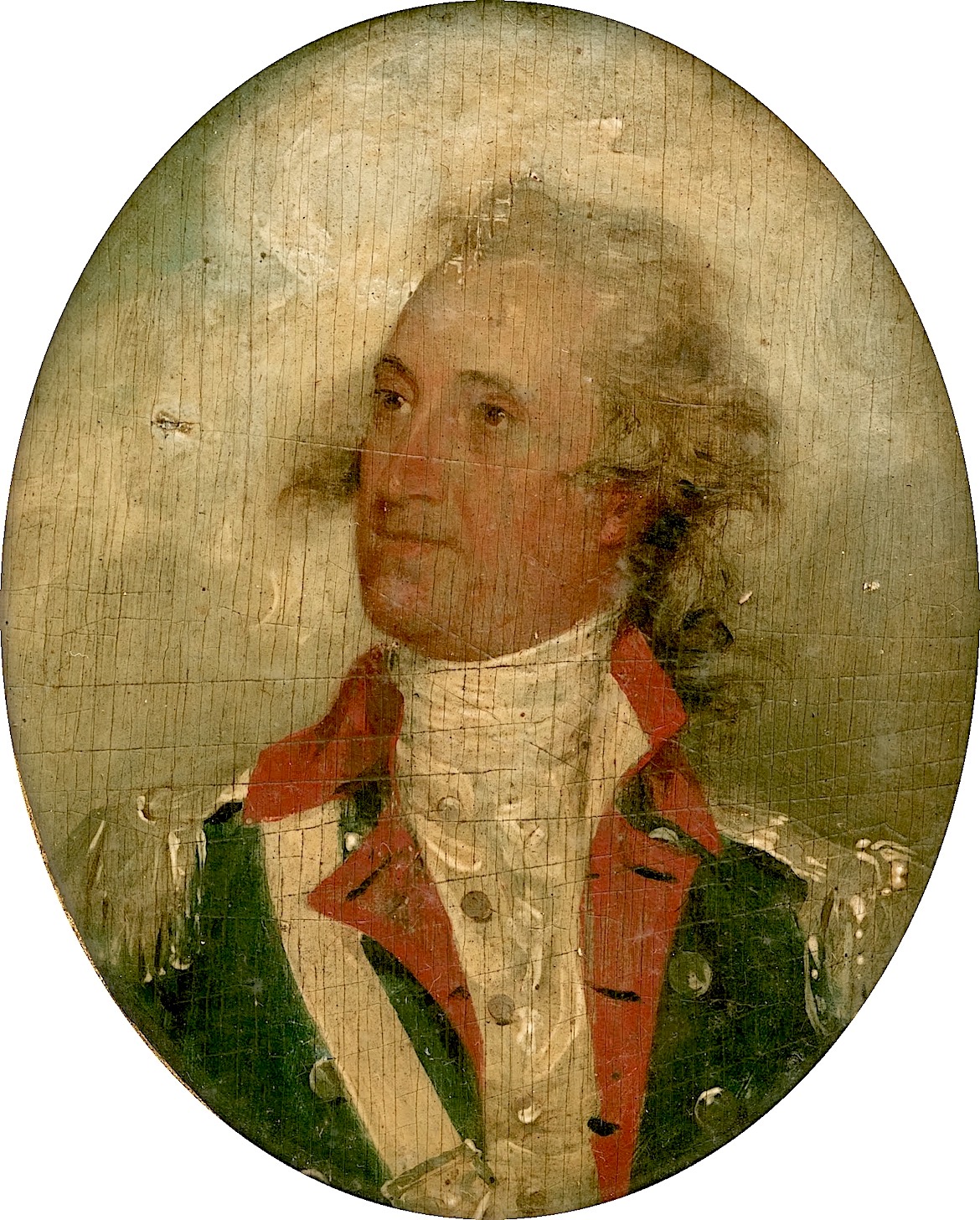
On Monday, 25 October 1790, City Council elected nine affluent gentlemen to serve as Commissioners of the Orphan House, and the same day hired several staff members to manage the day-to-day affairs of the institution. From that moment, the commissioners initiated a search for a temporary facility, or perhaps resumed conversations started weeks earlier. In either case, they evidently spoke with recent South Carolina governor Thomas Pinckney (1750–1828) and his mother, Elizabeth or “Eliza” Lucas Pinckney (1722–1793). The sixty-eight-year-old widow divided her time between a fine mansion at the southwest corner of East Bay and Guignard Streets, in Colleton Square, and a rural retreat, Hampton Plantation, in the Santee Delta. Thomas Pinckney was definitely in the city in mid-October 1790, when voters elected him to represent the urban parishes of St. Philip and St. Michael in the state legislature. Before trekking inland to the new capital city of Columbia, Thomas might have suggested a temporary home for the new institution.
Among the many properties owned by the affluent Pinckney family was rental tenement located just a stone’s throw from the family mansion. The building in question was a substantial three-story brick structure on the north side of Ellery Street, forming a square corner with a narrow path called French Alley. The broad tenement faced southward, overlooking a creek then being filled to create Market Street. Ellery Street intersected with Church Street directly in front of the Pinckney tenement, but the latter street was only visible at low tide. Anyone standing under the portico of St. Philip’s Church could look due north, eight hundred feet, and see the building’s façade, which formed the northern terminus of Church Street for nearly a century.
The property in question was near the center of a ten-acre development known as Colleton Square, which Charles Pinckney had purchased and subdivided with a pair of business partners in the 1740s. To Huguenot cooper Gabriel Guignard, Pinckney sold much of the land between Ellery and Pinckney Streets in August 1744.[4] In July 1747, Guignard sold a relatively small lot at the northwest corner of Ellery Street and French Alley to a planter named James McCrelless (also spelled McRelless, McKrellis, etc.).[5] Two years later, McCrelless mortgaged the same vacant property to a pair of Charleston merchants named John Wragg and Thomas Bolton in exchange for a building loan.[6] With their money, McCrelless commenced building a brick edifice on the corner lot, but died in late 1749 or early 1750, before its completion and before repaying the mortgage. Messrs. Wragg and Bolton then seized the lot and the unfinished tenement they had financed. In an advertisement for its sale at auction in July 1750, the merchants noted that the property included “a convenient brick house and back buildings thereon, unfinish’d, lately belonging to James McKrelless, deceas’d, under mortgage.”[7]
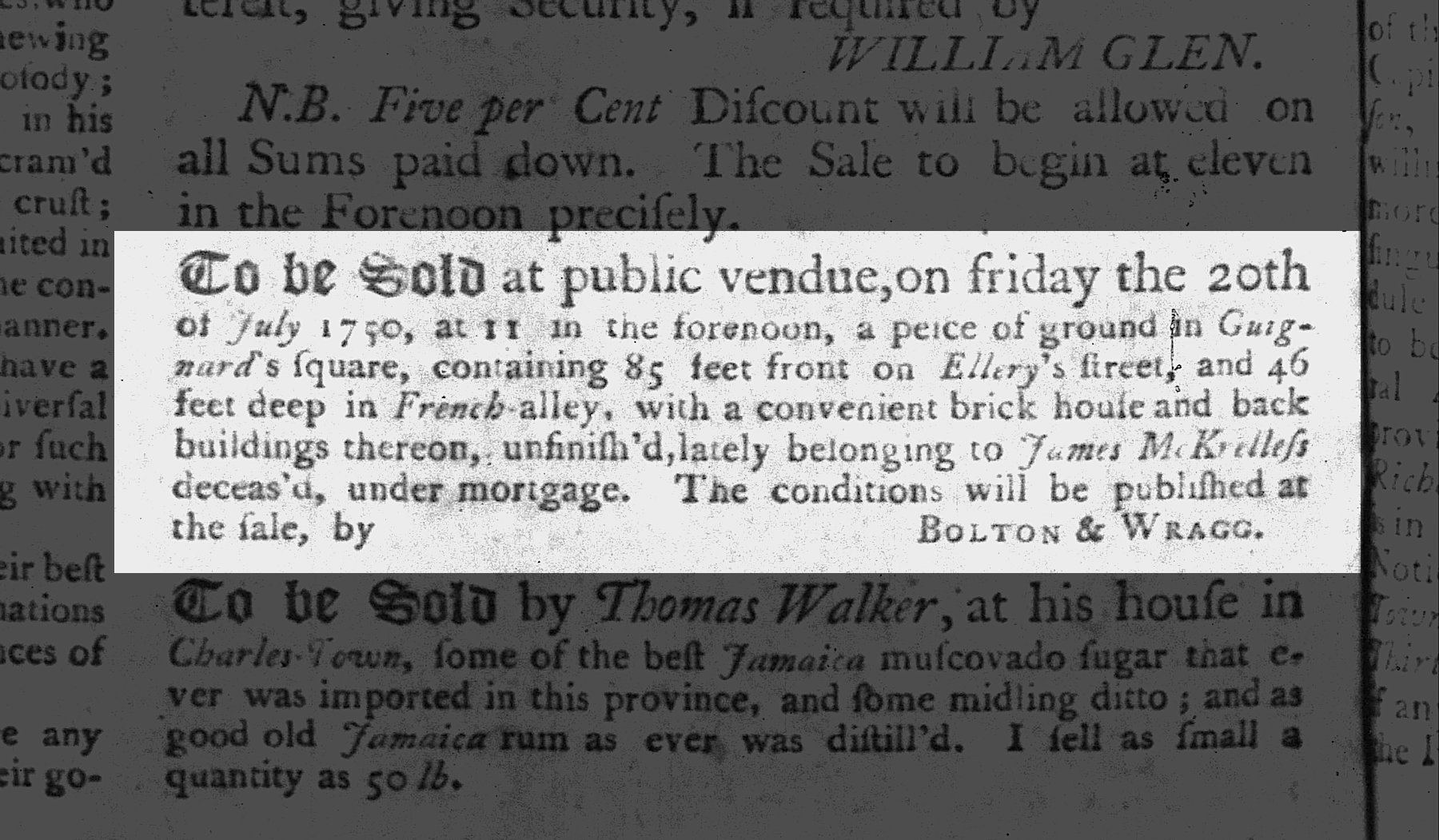
Charles Pinckney evidently purchased the McCrelless lot in July 1750, but no record of the transaction survives. He must have finished the aforementioned house, too, perhaps employing the same mulatto carpenter, John Williams, who had finished the stately interior of the Pinckney mansion nearby, and whom Charles had emancipated from slavery in May 1750. The completed tenement was thereafter leased to persons unknown, whose rental payments generated income for the Pinckney family. In his will, drafted in early June 1752, Charles devised to his wife, Elizabeth, “the use of my house and land I lately bought of Messrs. Wragg & Bolton, in Colleton Square formerly belonging to James McCrellis, deceased.” After Eliza’s death, the property was to descend to their son, Thomas. Three weeks later, Charles revisited the matter in a codicil to his will. Pinckney said he had recently purchased two additional small lots on the west side of French Alley, abutting the north side of his property at the corner of Ellery Street. Opining that the two lots were “convenient and necessary to be annexed to the said lands so bought of Wragg and Bolton,” Pinckney declared “that they shall always go with the said lands and as appurtenant and belonging to the same.”[8]
At the time of his death in 1758, Charles Pinckney’s rental property in Colleton Square measured approximately seventy-five feet along the north side of Ellery Street and approximately one hundred feet on the west side of French Alley. The three-story brick tenement stood at the southeastern corner of this lot, facing Church Street, and the rear portion was filled with out buildings and garden space. At some unknown point in time after his death, an unidentified member of the Pinckney family purchased additional land to the west of that rectangular lot, extending its southern line approximately sixty-six feet to the west along Ellery Street. That extension also reached northward 150 feet to Guignard Street, providing the Pinckney lot with a second entrance through some sort of back gate.[9] In the autumn of 1790, Eliza Pinckney agreed to lease this large urban property to the City of Charleston for the reasonable sum of £100 South Carolina sterling per year.[10]

On Thursday, 28 October 1790, the nine commissioners elected by City Council opened a blank journal and began recording minutes with quill and ink, noting that they “met for the first time at the house hired as an Orphan House.” They recorded no description of the building, its rooms, or its grounds, but the forty-year-old Pinckney tenement was evidently ready for immediate occupation. We learn something of its residential capacity from the minutes of that first meeting. The commissioners observed that public funds then supported approximately one hundred white children distributed in four urban clusters. Three distinct groups resided with Sarah Bricken, Sarah Good, and Maria Rodgers, respectively, while schoolmaster Philip Anthony Besselieu housed a large group of young boys at his home.[11] Because the rented Orphan House was too small to house all of these children, the commissioners prioritized their removal to the new facility. To Mrs. Sarah Bricken, appointed Mistress or Matron of the institution by City Council, the commissioners sent a message on October 28th requesting her “to take possession of the house immediately, and remove the children under her care into the Orphan House.” Thereafter, she was “to receive those [children] under the care of Mrs. Sarah Good and Miss Maria Rodgers into the house on Monday morning next the 1st November.” The charity boys residing with Mr. Besselieu remained under his care for several more years.
In late October and early November 1790, sixty-odd white boys and girls moved into the Pinckney tenement in Colleton Square, sleeping in an unknown number of bedrooms and playing in a commodious, fenced yard adjacent to the building. A staff of resident white nurses cared for the children and taught them to read and write, while the commissioners hired a small staff of resident enslaved people to cook their meals, wash their clothes, and clean the building. Six months after the institution’s inception, residents of the Orphan House received instructions to tidy the building for the visit of a very important guest. The first President of the United States, George Washington, was making a tour of the Southern states, and the members of Charleston’s City Council wanted him to witness the nation’s first public orphanage.

Washington crossed the Cooper River from Mount Pleasant to Charleston on Monday, 2 May 1791, and settled into a Church-Street residence for a week-long visit (see Episode No. 52). Throngs of citizens followed the president’s movements throughout the city as he visited local landmarks, dined with state officials, and attended colorful soirées. Early on the morning of Saturday, May 7th, a number of local dignitaries escorted Washington up Church Street, past St. Philip’s Church, to the Pinckney tenement at the corner of Ellery Street and French Alley. The commissioners who welcomed him to the Orphan House later recorded a summary of his visit in their manuscript journal:
“The President of the United States, accompanied by the Hon. Pierce Butler, one of the senators in the Congress of the United States, Gen. [William] Moultrie, Gen. [Charles Cotesworth] Pinckney, Major E[dward]. Rutledge, and the attorney-general of this state [Alexander Moultrie], conducted by his honor the Intendant [Arnoldus Vanderhorst], visited the Orphan House; where he was received by John Mitchell, John Robertson, Richard Cole, Thomas Corbett, Samuel Beekman, and Charles Lining, Esqrs., Commissioners.
Mr. [Philip Anthony] Besselieu having attended with the boys under his tuition,
The Commissioners laid the ordinance for establishing the Orphan House, the Rules of the House, the Journals of the proceedings of the Board, & the Register before the President for his perusal. He was pleased to express the highest approbation of the Institution. The children being assembled in the Breakfast Room, to the number of one hundred & seven, with the mistress, steward, assistant, & nurses, in their proper places, his Honor the Intendant, & the other Commissioners, conducted the President & the gentlemen who attended him, to the room. On taking leave of the children, he very pathetically pronounced his benediction on them.
A genteel breakfast was provided in the Commissioners’ Room. On his departure he [i.e., Washington] took a polite leave of the commissioners, wishing them success in their laudable & benevolent endeavors.”[12]
A few days later, the local Gazette published a few extra notes about the president’s visit to the rented Orphan House: “Upwards of one hundred orphan children, decently cloathed [sic], were assembled at breakfast; whose pleasing appearance, with the regularity and decorum observable in the government and economy of this excellent institution, appeared to fill his benevolent heart with the most delightful sensations. He staid [sic] nearly an hour, making many minute enquiries, and at his departure pronounced a benediction on this little community, who have been so happily rescued from misery, wretchedness and want.”[13]
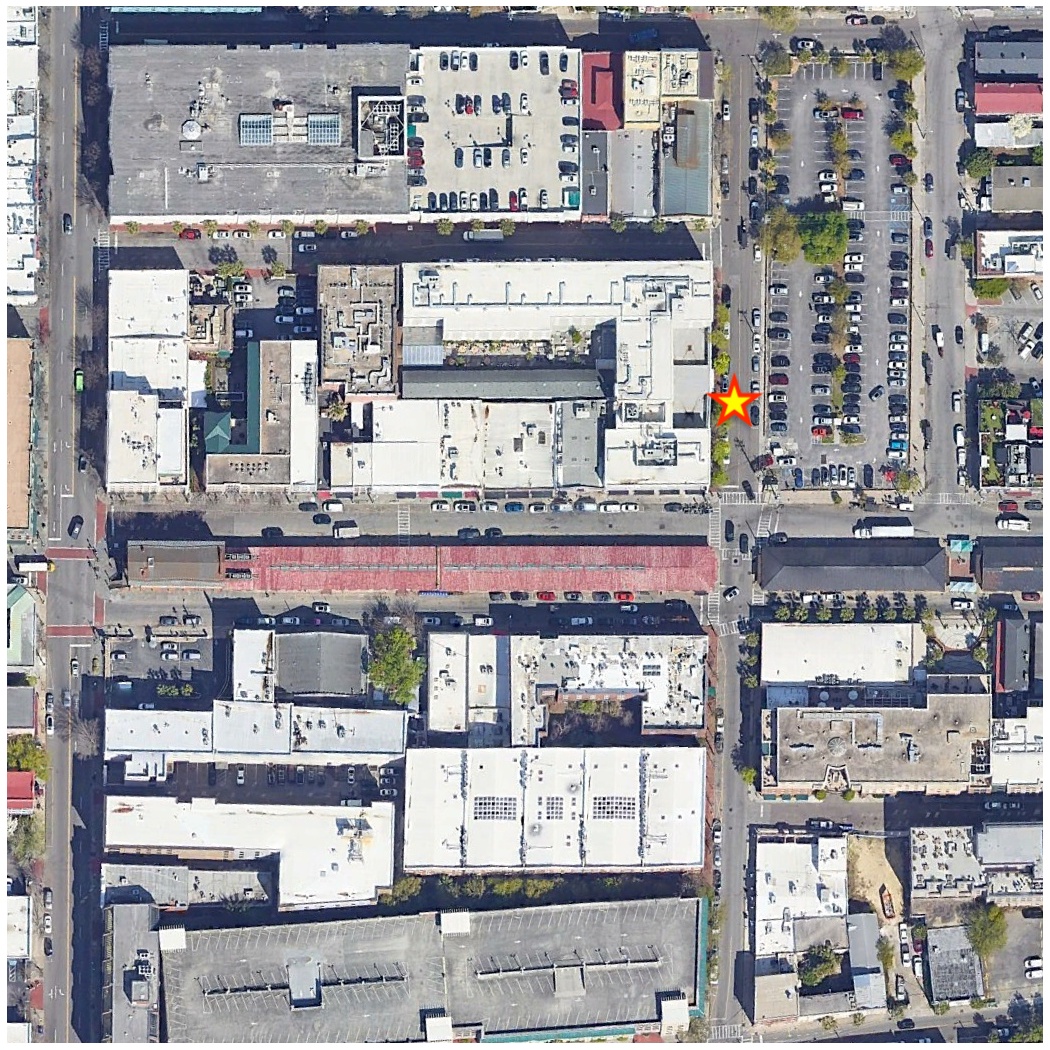
In the months after Washington’s departure from Charleston, the Commissioners of the Orphan House canvassed the community and hosted a number of events to raise funds for the construction of a larger and more permanent home. Eliza Pinckney, for example, made several small donations of £10 to the cause before her death in May 1793. Her son Thomas inherited the rented orphanage, but he was then in London, serving as the United States ambassador to the Court of St. James. During his absence, the commissioners tendered their semi-annual payments of £50 to Thomas’s older sister, Harriott Pinckney Horry (1748–1830).
Four years of fundraising and construction reached a climax on 18 October 1794, when the Commissioners of the Orphan House celebrated the institution’s fourth anniversary by opening its newly-completed home on the north side of Boundary Street (renamed Calhoun Street in 1850). Of the 115 children supported by public funds at that moment, 113 toured the large new facility with city and state officials, but they did not immediately transfer their residence. The new dormitories were not quite ready for occupation, and parts of the building were still under construction.[14]
On Monday, October 20th, two days after the grand opening, the commissioners convened at the new facility to assign its numerous rooms to specific purposes. According to their orders, the children residing at the old Pinckney tenement vacated that building on 23 October 1794 and marched half a mile northwestward to the new Orphan House.[15] At a board meeting held three days later, one of the commissioners reported “that the Old Orphan House was cleared out,” and the steward of the institution had delivered the keys to Mrs. Horry, along with their final payment of £50 for the last six months’ rent.[16] Finally, on October 30th, Philip Anthony Besselieu moved into the east wing of the new Orphan House with the dozens of boys under his care.[17] For the first time, all of the 115 children supported by public funds in Charleston were housed under one roof.
The Pinckney family thereafter leased the old tenement to a succession of renters. During the early years of the nineteenth century, newspaper notices demonstrate that it was occupied as a boarding house, a music school, and briefly as a fencing academy.[18] At some unknown point before 1818, perhaps even during the early 1790s, the building was colored with a white finish. Workers might have added a coat of lime render over the bricks to create a smooth exterior, or, to save money, they might have simply brushed liquid whitewash over the red bricks from time to time.[19]
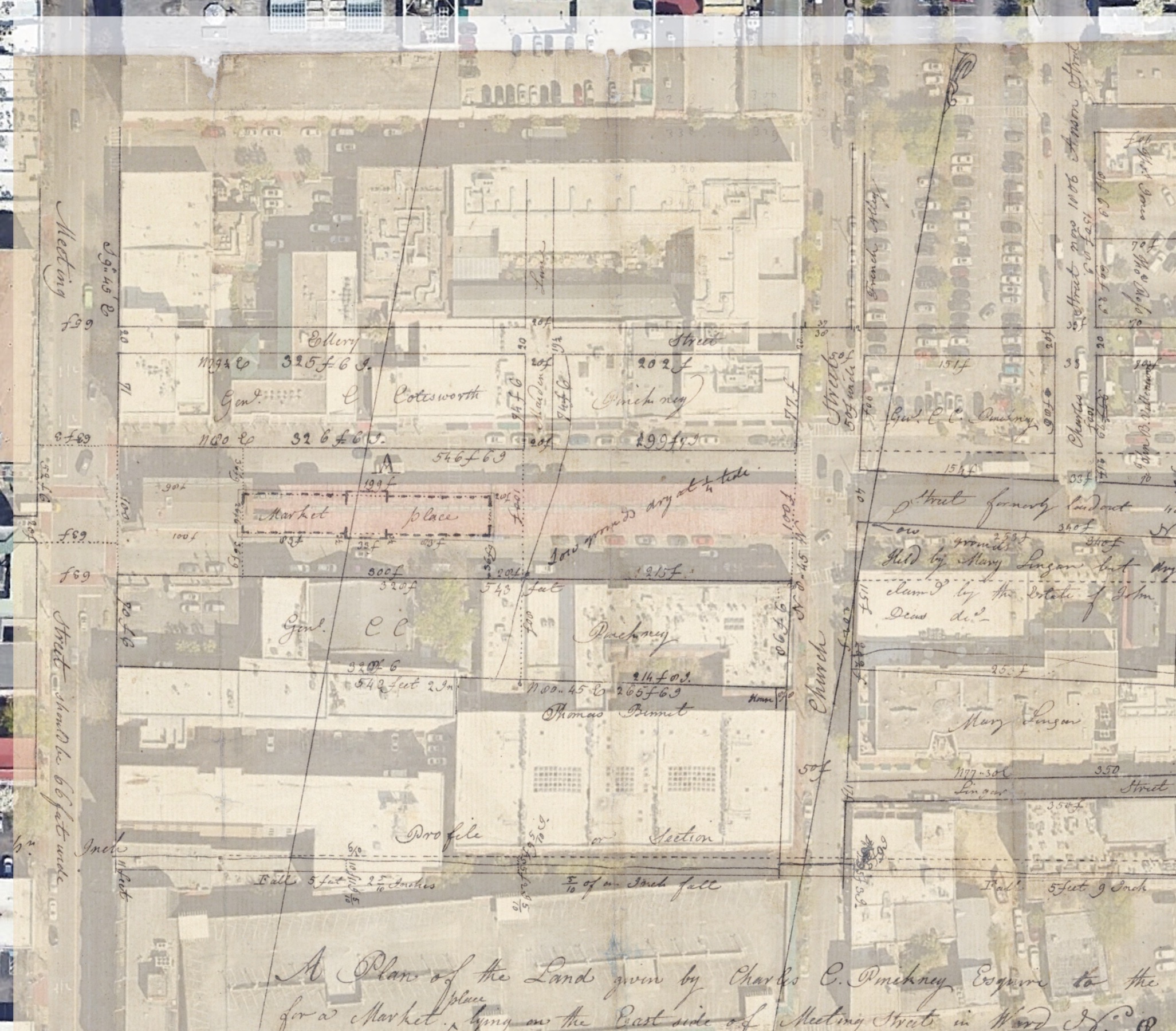
Before his death in November 1828, Thomas Pinckney bequeathed the old tenement at the corner of Ellery Street and French Alley to his daughter Elizabeth, who had married into the Lowndes family.[20] Elizabeth Brewton Pinckney Lowndes (1781–1857) sold the property to a local merchant named John Hunter in May 1829.[21] Hunter owned multiple properties nearby, and evidently continued the practice of leasing the building for several more years. Unfortunately, the three-story brick structure finished by Charles Pinckney around the year 1750 perished on the morning of 6 June 1835, when a large fire consumed most of the surrounding neighborhood.[22]
Citizens lamented the loss of so many colonial-era structures in that conflagration, but some recognized “the opportunity now afforded by the destruction of the old Orphan House for the extension of Church-street.”[23] City Surveyor Charles Parker measured and platted the burned district immediately north of Market Street and began planning a reduced grid of wider streets. As part of a larger city initiative to reshape the neighborhood, John Hunter sold the burned-out site of Charleston’s first Orphan House to City Council in March 1836.[24] French Alley disappeared from the landscape shortly thereafter, and workers extended Church Street northward through the site of the old Pinckney tenement. When another fire in the same neighborhood in April 1838 burned most of the buildings on the north side of Market Street, City Council resolved to close Ellery Street permanently and to widen Market Street to its present breadth.[25] After the state legislature approved the closure of the century-old thoroughfare, city leaders ratified an ordinance in September 1840 to erase Ellery Street.[26] The forgotten site of the first public orphanage in the United States is now in the middle of Church Street, slightly north of north Market Street, opposite the entrance to a modern hotel.
The Charleston Orphan House persevered at its purpose-built campus from October 1794 through August 1951. At that time, the children and staff moved to a new facility in North Charleston, where the municipal institution continued the new name Oak Grove Child Care Center. The City of Charleston formally removed itself from the administration of the Oak Grove facility in 1978, after which the venerable institution was reorganized as a private, not-for-profit entity called Carolina Youth Development Center. That name endured until 2023, when the institution was again reorganized and rebranded as Landmarks for Families. The important work of the present organization continues the benevolent spirit nurtured at the dawn of Charleston, but in a more inclusive and equitable manner than our colonial predecessors. To the board and staff of the Landmarks family, your history bodes well for many years of future success.
[1] See the will of Susannah Snelling of Charleston, dated 26 June 1790; proved on 9 July 1790; recorded in South Carolina Department of Archives and History (hereafter SCDAH), Will Book B (1786–1793), 429; WPA transcripts (available at the S.C. History Room at CCPL), volume 23: 666–68. Miss Snelling’s name does not appear within the burial register of St. Philip’s Episcopal Church, but their churchyard contains a large stone tablet erected in memory of her and her family.
[2] [Charleston, S.C.] City Gazette, 29 June 1790, page 3. Snelling’s executor in October 1791 delivered to the South Carolina Society her donation of £258.15.8 (South Carolina sterling); see Joshua W. Toomer, An Oration, Delivered at the Celebration of the First Centennial Anniversary of the South Carolina Society, in Charleston, on the Twenty-Eighth Day of March, Anno Domini, 1837 (Charleston, S.C.: A. E. Miller, 1837), 40.
[3] The full text of “An Ordinance for the Establishment of an Orphan House in the City of Charleston for the purpose of supporting and Educating poor Orphan Children and those of Poor Distressed and disabled parents who are unable to support and maintain them,” appears in several published compilations of Charleston ordinances, including Alexander Edwards, comp., Ordinances of the City Council of Charleston, In the State of South Carolina, Passed since the Incorporation of the City, Collected and Revised Pursuant to A Resolution of the Council (Charleston, S.C.: W. P. Young, 1802), 82–85.
[4] Charles Pinckney to Gabriel Guignard, cooper, lease and release, 30–31 August 1744, CCRD volume Z: 531–39.
[5] James McRelless (also spelled McCrelles, McKrellis), planter of Christ Church Parish, to Gabriel Guignard, cooper, mortgage by lease and release, 30–31 July 1747, Charleston County Register of Deeds (hereafter CCRD), volume DD: 170–73.
[6] James MacKrelless [sic] to Thomas Bolton and John Wragg, merchants, mortgage by lease and release, 1–2 September 1749, CCRD volume FF: 174–80.
[7] South Carolina Gazette, 25 June–2 July 1750, page 2.
[8] The full text of the will of Charles Pinckney, dated 4 June 1752, with several subsequent codicils, was proved in London on 18 March 1769 and is held by the National Archive of Great Britain, Kew, PROB 11/947/65; a full transcription appears in The Papers of Eliza Lucas Pinckney and Harriott Pinckney Horry Digital Edition, University of Virginia; an abstract of the same appears in Lothrop Withington, ed., “South Carolina Gleanings in England (Continued),” South Carolina Historical and Genealogical Magazine 8 (October 1907): 217–19.
[9] The 1829 sale of this Pinckney property describes a larger swath of land than is described in the 1752 will of Charles Pinckney, but I have not yet found a record of the family purchasing the additional space.
[10] No rental agreement survives, but the extant minutes and financial accounts of the Commissioners of the Charleston Orphan House include several semi-annual payments of £50 to the Pinckney family during the years 1790–94; see, for example, CCPL, Orphan House minutes, 1790–95, page 162–67 (15 September 1793). For a discussion of the value of South Carolina sterling after the American Revolution, see Charleston Time Machine Episode No. 280, “Cash and Credit in South Carolina before the U.S. Dollar” (12 April 2024).
[11] City Gazette, 27 October 1790, page 2; Minutes of the Commissioners of the Charleston Orphan House, 1790–95, pages 6–7 (28 October 1790), held in the Charleston Archive at the Charleston County Public Library (CCPL). Besselieu and the “poor children” at his school are mentioned in the seventh section of the Orphan House ordinance of 1790.
[12] CCPL, Minutes of the Commissioners of the Charleston Orphan House, 1790–95, page 25 (7 May 1791). This same text appears in a lengthy review of Washington’s week in Charleston, published in City Gazette, 14 May 1791, page 2.
[13] City Gazette, 10 May 1791, page 3.
[14] CCPL, Minutes of the Commissioners of the Charleston Orphan House, 1790–95, page 226 (18 October 1794).
[15] Minutes of the Commissioners of the Charleston Orphan House, volume 1790–95, p. 232 (20 October 1794): “The Board ordered that the children in the old Orphan House be removed to the new Orphan House on Thursday next [i.e., 23 October 1794], and that the boys at Besselieu’s be not removed ‘till a future period, in order to prevent any interruption to the workmen in finishing the center building and wells.”
[16] CCPL, Minutes of the Commissioners of the Charleston Orphan House, 1790–95, page 240 (26 October 1794).
[17] CCPL, Minutes of the Commissioners of the Charleston Orphan House, 1790–95, pages 241–42 (30 October and 2 November 1794).
[18] City Gazette, 22 July 1812, page 3, “F. Lecat”; Charleston Courier, 6 June 1816, page 3, “Fencing Academy.”; Courier, 26 July 1816, page 3.
[19] Charleston Times, 29 January 1818, “To Parents and Guardians. A Gentleman of abilities, has opened a School at the White House, north end of Church-street (the Old Orphan-House). Every attention will be paid to Pupils. He solicits a share of public patronage.”
[20] Thomas Pinckney and his wife, Frances, made a joint will on 23 May 1820 and added a codicil on 20 April 1822 that mentions the old Orphan House. To their daughter Elizabeth Brewton Lowndes, Thomas devised “my houses & lots in Ellery & Guegnard [sic; Guignard] Streets.” Will proved on 29 June 1829; recorded in SCDAH, Will Book G (1826–1834), page 321; WPA transcripts, volume 38: 571–82.
[21] Elizabeth B. Lowndes to John Hunter, “conveyance of old orphan house” 9 May 1829, CCRD volume Y9: 212–13; John Hunter to Elizabeth B. Lowndes, mortgage, 9 May 1829, CCRD volume B10: 94–95.
[22] [Charleston, S.C.] Southern Patriot, 6 June 1835, page 2, “Extensive and Destructive Fire”; Charleston Courier, 8 June 1835, page 2, “Great and Calamitous Fire.”
[23] Courier, 11 June 1835, page 2, “Suggestions.”
[24] John Hunter to City Council of Charleston, conveyance, 24 March 1836, CCRD volume N10: 22–25.
[25] Proceedings of City Council, 29 October 1838, published in Courier, 31 October 1838.
[26] See Act No. 2760, “An Act to authorize the City Council of Charleston to close and discontinue Ellery-street,” ratified on 19 December 1838, in David J. McCord, ed., The Statutes at Large of South Carolina, volume 7 (Columbia, S.C.: A. S. Johnston, 1840), 161; “An Ordinance to close up and discontinue Ellery Street as a Public Highway,” ratified on 2 September 1840, in George B. Eckhard, comp., A Digest of the Ordinances of the City Council of Charleston, from the Year 1783 to October 1844 (Charleston, S.C.: Walker & Burke, 1844), 263.
NEXT: Policing Rural Charleston, from Colonial Posse to County Sheriff
PREVIOUSLY: Colleton Square: Prelude to Market Street
See more from Charleston Time Machine
